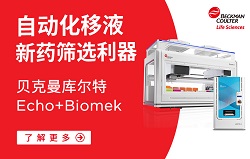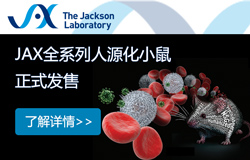Isolation and Culture of Human Liver Stem Cells
Isolation and Culture of Human Liver Stem Cells
Materials and Methods
1. Human hepatocytes were isolated from fresh surgical specimens of patients undergoing hepatectomies. Healthy liver tissue (5–20g) was used to isolate hepatocytes by collagenase digestion.
2. Liver tissues were isolated and perfused with 350 ml of a warm (37°C) calcium-free buffer.
3. Liver tissues were digested in Digest Medium at 37°C. This resulted in blanching, softening, and dissociation of hepatic tissue and provided complete digestion of the liver in 10–12 minutes.
4. The hepatocytes were released by mincing and pipetting with a large-bore pipette.
5. The cell suspension was filtered through a sterile 100-μm nylon mesh into a beaker placed on ice, sedimented by centrifugation at 50g for 5 minutes, resuspended, and washed two to three times in cold wash medium.
6. The initial plating consisted of Williams Medium E supplemented with glutamine and with 5% fetal calf serum.
7. Unattached cells were poured off 2–3 hours later and replaced with hepatocyte serum-free medium, a highly modified Chees' medium supplemented with 1.25 μg/cm2 collagen to provide a sandwich matrix.
8. Cultures were re-fed with Hepatozyme-SFM (without collagen) at 24 hours and every 48 hours thereafter.
9. Hepatocytes were seeded at a density of 1.0–1.5 × 105 viable cells, 80% viable cells determined by the trypan blue, per cm2 onto collagen-coated culture plates in Hepatozyme-SFM maintained at 37°C, 5% CO2 for 2 weeks.
10. Human cryopreserved normal hepatocytes obtained were also used.
11. After 2 weeks of culture, hepatocytes died, and then medium was substituted by α-minimum essential medium/endothelial cell basal medium-1 (α-MEM/EBM) (3:1) supplemented with l-glutamine (5 mM), Hepes (12 mM, pH 7.4), penicillin (50 IU/ml), streptomycin (50 μg/ml, FCS (10%), and horse serum (HS, 10%).
12. Individual attached cells were identified on the culture dish after another 3 weeks.
13. When colonies were evident, cloning rings were placed around them, and they were subcultured to an individual well of a 24-well culture plate.
14. The expanded cells were transferred to a T-75 flask and analyzed when they approached confluence.
15. Colony-Forming Unit-Fibroblast Assay: The assay was performed using a modification of a previously described protocol used to evaluate the frequency of MSCs in fresh bone marrow. Human cryopreserved or fresh normal hepatocytes were seeded at a concentration of 1.0–1.5 × 105 viable cells/cm2 under the culture conditions described above. Medium was changed at day 15. On day 20, the number of colonies displaying five or more cells was scored under an inverted microscope.
16. Growth Kinetics: Growth curves describing culture kinetics were generated. The growth area occupied by a primary HLSC culture, corresponding to 25 cm2, was assumed as 1, as a matter of simplification. When the second passage took place, the split ratio at passage 1 (1:3) was multiplied by that value, meaning that at the end of passage 1, the cumulative growth area was 3 (i.e., three times the growth area occupied by a primary culture). At the end of the second passage, the split ratio at passage 2 (1:3) was multiplied by the cumulative growth area at passage 1 (3 × 3 = 9). This procedure was repeated for each passage, providing a theoretical growth curve that is directly proportional to the cell number. Growth was evaluated in several different HLSC clones.
17. Immunofluorescence: Cytofluorometric analysis was performed, and the following antibodies, all phycoerythrin (PE)- or fluorescein isothiocyanate (FITC)-conjugated, were used: anti-CD105, -CD29, -CD31, -CD34, -CD146, -CD44, and -CD117; -CD73, -CD45, -CD90, -CD14, and -CD144; -CD133; and monoclonal antibodies and PE-conjugated goat antibodies against mouse IgG secondary antibody (Ab) when needed.
Copyright(C) 1998-2025 生物器材網 電話:021-64166852;13621656896 E-mail:info@bio-equip.com





